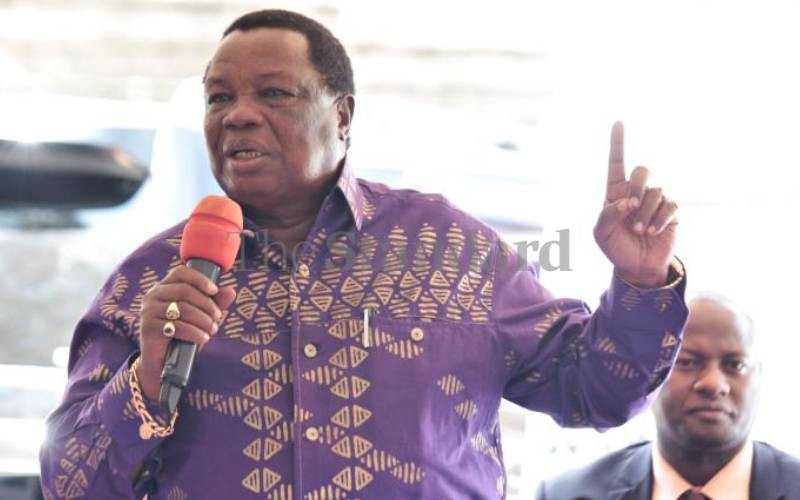
I work in a fast-paced marketing and communications environment.
My team and I are constantly immersed in a vortex of activities crafting internal/external campaigns, managing social media, conducting market research, managing events and collaborating with internal stakeholders.
Yet, among this exhilarating chaos, one question reigns supreme: “Who is our audience in all this?”
This simple yet profound inquiry drives our every move, shaping our content, guiding our decisions, and fueling our passion to connect with our internal and external customers.
Understanding your target audience is similar to laying the foundation for a sturdy building. It forms the bedrock of effective marketing, brand management, public relations and communications.
Join me as we explore the power of “target audience” in marketing.
Precision in Messaging
Precision in messaging is significantly affected by having a clear target audience, which is particularly evident in the marketing strategies of branded beer, spirits, and non-alcoholic beverage manufacturers.
For instance, when targeting younger demographics, such as young professionals, Diageo often crafts its messaging to emphasise social experiences, fun, and freedom. By understanding the lifestyle and aspirations of this specific target audience, East African Breweries Ltd (EABL) creates precise messaging that resonates with the desires and interests of young consumers.
This might involve using imagery and language that align with the youthful and vibrant nature of the target audience, as well as promoting events and activities that appeal to this demographic.
Conversely, when targeting older, more affluent demographics, EABL focuses on sophistication, quality, and exclusivity. By understanding the preferences and values of this specific target audience, EABL can craft precise messaging that speaks to the refined tastes and lifestyles of older, more discerning consumers. This might involve highlighting the heritage, craftsmanship, and premium nature of the products, as well as associating the brand with upscale events and settings that appeal to this demographic.
Resource Optimisation
When it comes to resource optimisation, let us take the example of Sun King, a company that designs, distributes, and finances solar home energy for 1.8 billion people without reliable electricity.
By identifying its target audience as households without access to reliable electricity, Sun King can optimise its resources by focusing on marketing and distribution channels that specifically reach these communities.
Stay informed. Subscribe to our newsletter
Instead of spending resources on broad, nationwide advertising, they can invest in local community outreach programmes, collaborate with microfinance institutions that serve these areas, and participate in regional trade fairs and agricultural shows where their target audience will likely be present.
This targeted approach not only conserves resources but also ensures that Sun King’s ESG efforts directly benefit the communities they aim to serve, creating a more meaningful and impactful connection with their audience while optimising their overall impact.
Product Development
Tailoring products to meet the specific needs of a target audience enhances market penetration. President William Ruto’s announcement of Kenya-made affordable smartphones highlights the importance of catering to the needs of the local population.
With the promise of smartphones retailing at approximately Sh5,400 and offering access to digitized government services, the development of these devices is directly influenced by the specific needs and purchasing power of Kenyan consumers. Additionally, the emphasis on 4G capability and the availability of credit through lipa mdogo mdogo (pay in instalments) demonstrates a clear understanding of the target audience’s technological and financial requirements.
This approach ensures that the product aligns with the needs and preferences of the Kenyan market, ultimately leading to greater acceptance and impact.
Effective Use of Marketing Channels
Knowing the preferred channels of communication within a target audience ensures that marketing efforts reach the right people.
Let us consider KikoRomeo, a renowned fashion brand in Kenya known for its elegant and culturally inspired designs. If Kikoromeo is launching a new line of luxury traditional wear targeted at the affluent Kenyan diaspora, they would need to use popular marketing channels, such as targeted social media advertising, collaborations with diaspora-focused publications, and participation in international fashion events and exhibitions. By effectively using these specific marketing channels, Kikoromeo ensures that its message reaches the right audience, leading to increased brand visibility and engagement.
Building brand loyalty
By consistently delivering products and services that align with the values and preferences of a target audience, brands can foster long-term loyalty.
Java House Africa, a prominent chain of coffee houses across Kenya, has successfully built brand loyalty within this demographic by providing a comfortable and inviting ambience and ensuring consistency in the quality of its gourmet coffee and service. By aligning its brand with the preferences and needs of its consumers, Java House has cultivated a loyal customer base that identifies with its brand, leading to repeat visits and positive reviews.
This is evident by its growth with outlets in 14 cities across three countries - Kenya, Uganda, and Rwanda.
Adaptability to Market Changes
A deep understanding of the target audience enables businesses to adapt swiftly to market changes. With the shift toward digital consumption of news and media, companies like Nation Media Group and Standard Group can adapt to this market change by developing user-friendly mobile apps and creating engaging digital content.
Independent creators such as the Nairobi Gossip Club, Lynn Ngugi, The Nairobian, City Digest, Wanjiku Reports, and Cyprian Nyakundi are creating content faster than large media organizations can keep up with. Some viral news in 2023 had nothing to do with legacy media. They leverage platforms such as Telegram Messenger, WhatsApp channels, TikTok, and X to engage with their audience, and legacy media only serve as verification platforms.
By understanding the evolving needs and preferences of their target audience, these companies can stay relevant in the digital age and maintain their competitive edge in the media industry.
Competitive Edge
In a crowded marketplace, identifying and catering to a specific target audience provides a competitive edge. Naivas Limited, regarded as the number one supermarket chain in Kenya, has built a strong competitive edge by catering to a clear target audience. With its original motto “Naivas saves you money,” the brand has positioned itself as a cost-effective option for various customers across Kenya. By consistently delivering on this promise, Naivas has become a leading modern grocery player and a trusted store brand among Kenyan consumers.
Having a clear target audience has undoubtedly contributed to Naivas’ success. By understanding the specific needs and preferences of its customer base, Naivas has maintained its competitive edge and solidified its position in the market.
Measurable Success
Defining a target audience allows for a more accurate measurement of marketing success. Metrics such as conversion rates, engagement levels, and customer feedback can be directly tied to the effectiveness of campaigns aimed at the identified audience.
Safaricom, the leading mobile network operator in Kenya, has achieved measurable success by effectively targeting specific customer segments. By understanding the needs and preferences of different consumer groups, such as Discerning Professionals (Hustlers/Youth), SMEs, Large Enterprises, and Public Enterprises, Safaricom has been able to tailor its products and services to meet the diverse requirements of its target audience.
This targeted approach has resulted in measurable success for Safaricom, as evidenced by its market dominance and financial performance.
Always have a target audience in all your marketing and communications efforts. It will save you time and money.
The writer is a marketing, branding, and communications expert
 The Standard Group Plc is a
multi-media organization with investments in media platforms spanning newspaper
print operations, television, radio broadcasting, digital and online services. The
Standard Group is recognized as a leading multi-media house in Kenya with a key
influence in matters of national and international interest.
The Standard Group Plc is a
multi-media organization with investments in media platforms spanning newspaper
print operations, television, radio broadcasting, digital and online services. The
Standard Group is recognized as a leading multi-media house in Kenya with a key
influence in matters of national and international interest.
 The Standard Group Plc is a
multi-media organization with investments in media platforms spanning newspaper
print operations, television, radio broadcasting, digital and online services. The
Standard Group is recognized as a leading multi-media house in Kenya with a key
influence in matters of national and international interest.
The Standard Group Plc is a
multi-media organization with investments in media platforms spanning newspaper
print operations, television, radio broadcasting, digital and online services. The
Standard Group is recognized as a leading multi-media house in Kenya with a key
influence in matters of national and international interest.






